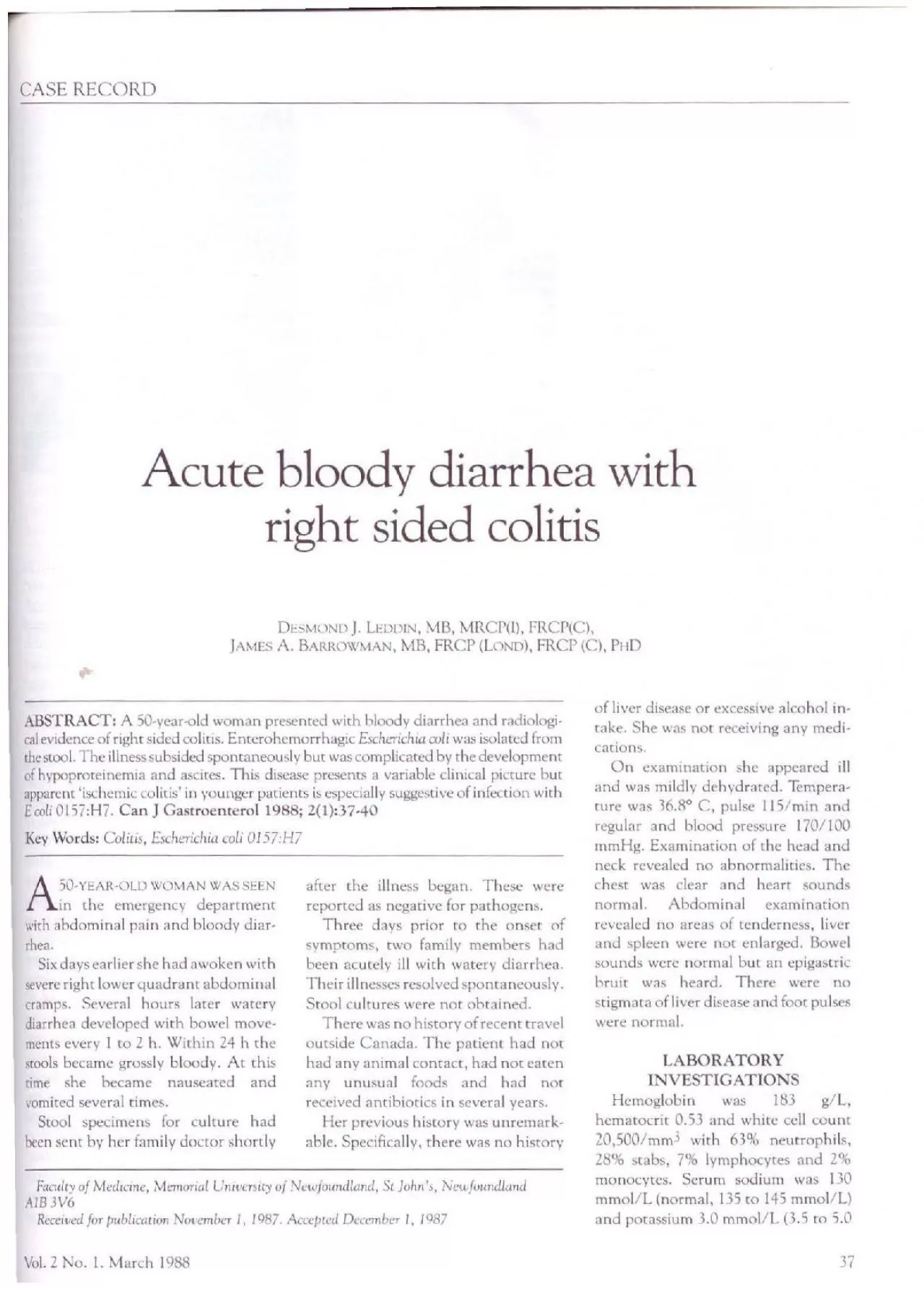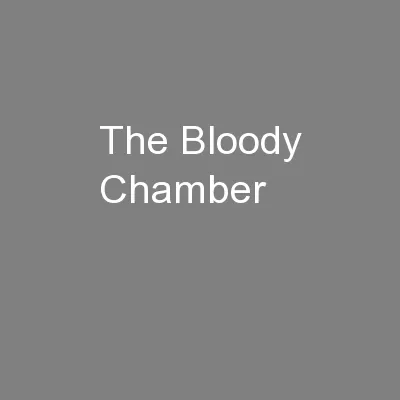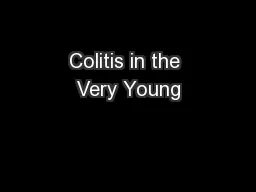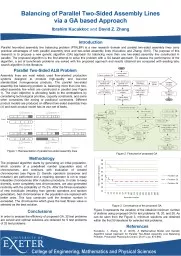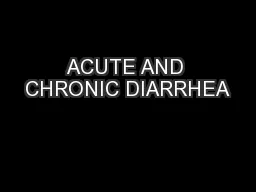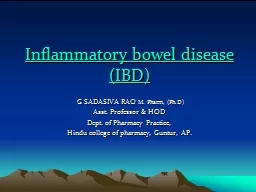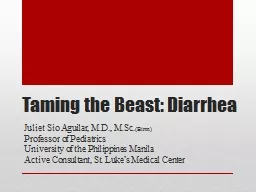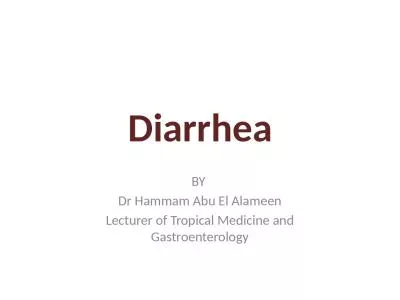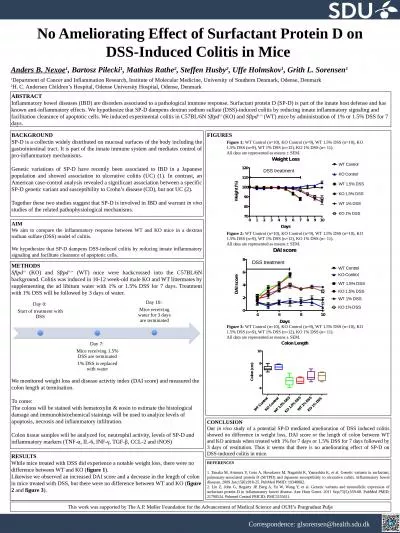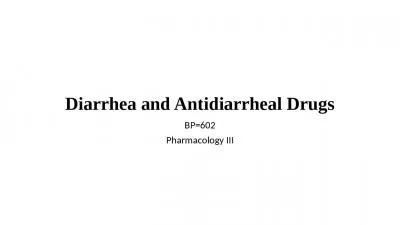PDF-CASE RECORD Acute bloody diarrhea with right sided colitis
Author : christina | Published Date : 2022-09-07
DESMOND J LEDDIN MB MRCPl FRCPC AMES A BARROWMAN MB FRCP LOND FRCP C Pl 10 ABSTRACT A SOyearold woman prescnced with bloody diarrhea and radiological evidence of
Presentation Embed Code
Download Presentation
Download Presentation The PPT/PDF document "CASE RECORD Acute bloody diarrhea with r..." is the property of its rightful owner. Permission is granted to download and print the materials on this website for personal, non-commercial use only, and to display it on your personal computer provided you do not modify the materials and that you retain all copyright notices contained in the materials. By downloading content from our website, you accept the terms of this agreement.
CASE RECORD Acute bloody diarrhea with right sided colitis: Transcript
Download Rules Of Document
"CASE RECORD Acute bloody diarrhea with right sided colitis"The content belongs to its owner. You may download and print it for personal use, without modification, and keep all copyright notices. By downloading, you agree to these terms.
Related Documents

